
Da Nang’s Weather & Seasons: When to Visit for the Best Experience
Governed by a tropical monsoon climate, the quality of your trip to Da Nang is dictated by the season. Use Hoi An Memories Land’s definitive guide to master the city's climate and identify the perfect travel window that aligns your priorities with the best forecast.
1. Understanding Da Nang’s Climate
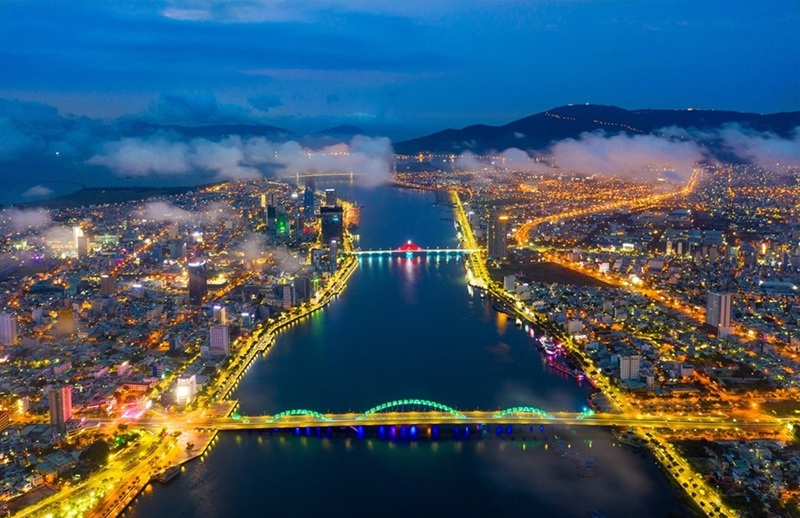
1.1. Tropical monsoon influences
Da Nang's location within a tropical monsoon region means its weather is defined by two distinct seasons. The dry season lasts from January to July, while the wet season begins in August and continues through December. The city's climate is quite consistent, with an average annual temperature of approximately 25°C and an average humidity of about 83.4%.
1.2. Temperature ranges across the year
Temperatures in Da Nang shift with the seasons.
Hottest Months (June–August): Temperatures average 28°–30°C, peaking up to 40°C in June/July.
The wet season, from September to December, is characterized by significant rainfall, which helps to cool the air and create a more refreshing atmosphere. The coolest months (December–February): Temperatures drop to 18°–23°C.
1.3. How Da Nang’s weather differs from Hoi An & Hue
While Da Nang, Hoi An, and Hue are geographically close, they each have distinct microclimates due to their specific locations. This can lead to noticeable differences in weather, particularly during the rainy and dry seasons.
|
Criteria |
Da Nang |
Hoi An |
Hue |
|
Geographical Location |
Coastal city between mountains and sea |
River delta town near the Thu Bon River |
North of Hai Van Pass, surrounded by mountains |
|
Dry Season |
January – July |
January – July (similar to Da Nang) |
March – August |
|
Rainy Season |
August – December |
August – December, flood-prone (esp. Sep–Nov) |
October – March, longer and heavier rains due to the northeast monsoon |
|
Rainfall Intensity |
Moderate, short heavy showers |
Similar pattern but higher flood risk |
High rainfall, cold and misty rain lasting for months |
|
Temperature (Hot Season) |
33°C – 38°C |
33°C – 38°C |
Up to 38°C – 40°C |
|
Temperature (Cool Season) |
18°C – 22°C |
18°C – 22°C, slightly more humid |
Below 15°C possible, colder and damp |
|
Flood Risk |
Low in city center |
High, especially in old town area |
Moderate, but not as flood-prone as Hoi An |
|
Season Timing |
Clear division between dry and wet seasons |
Similar timing to Da Nang |
Rainy season starts later and lasts longer into next year |
|
Overall Climate Feel |
Balanced tropical coastal climate |
Warm, humid, and flood-sensitive |
More continental, with stronger seasonal contrasts |
2. Da Nang’s Weather by Season
2.1. Spring (Feb – Apr): Mild temperatures & flower festivals
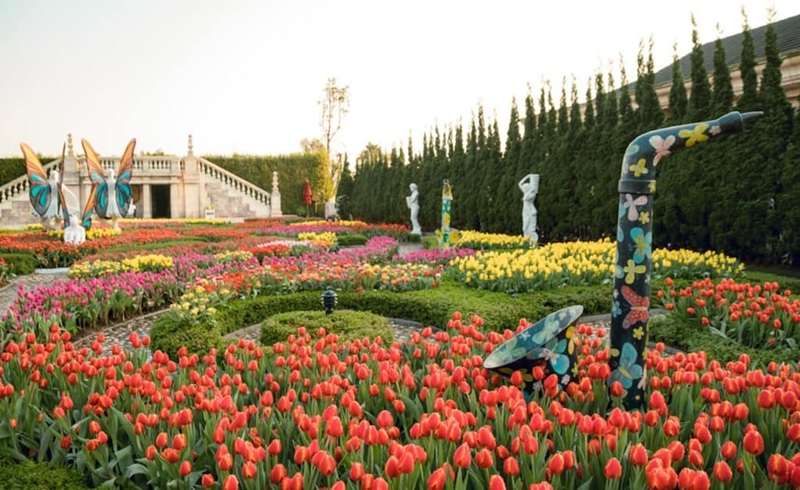
Spring is a lovely time to visit Da Nang. From February to April, the weather is mild and comfortable, with low humidity and very little rain. Temperatures range from around 20°C to 28°C, making it a great time for sightseeing and exploring the city without the intense heat of summer. This period also hosts some beautiful cultural events, such as the Ba Na Flower Festival.
2.2. Summer (May – Aug): Beach paradise & water sports
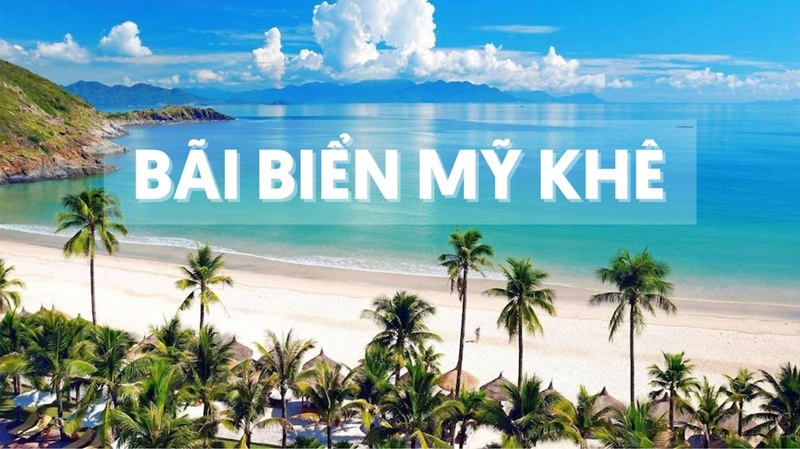
Summer is Da Nang's peak season for a reason. From May to August, the weather is hot and sunny, perfect for hitting the beaches. Temperatures are at their highest, typically from 28°C to 30°C, and can even reach peaks of 40°C in June and July. The skies are clear and the sea is calm, making it ideal for swimming, sunbathing, and watersports.
2.3. Autumn (Sep – Oct): Rain showers & cultural highlights
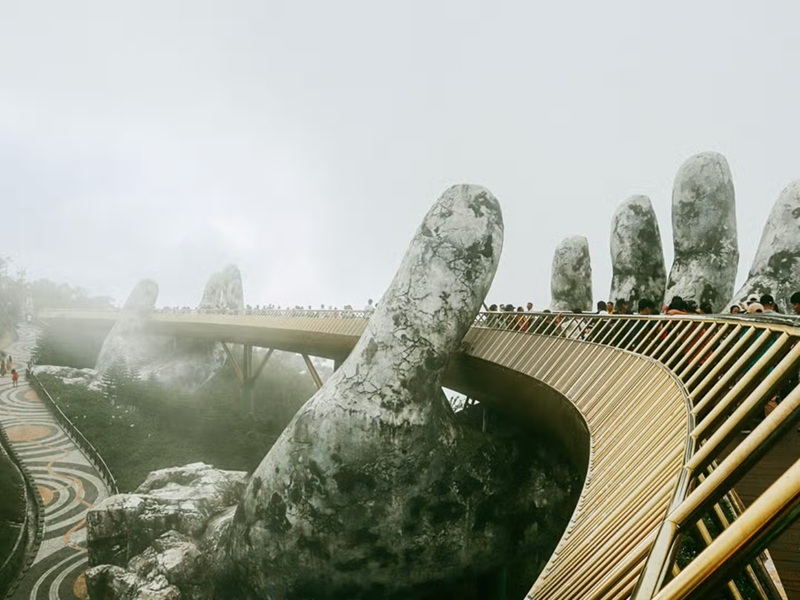
September marks the start of the wet season. From September to October, you can expect frequent and sometimes heavy rain showers. While this might limit some outdoor activities, the weather is cooler, with temperatures ranging from 23°C to 28°C. The city is also less crowded, making it a great time to explore indoor attractions like museums and enjoy local cuisine.
2.4. Winter (Nov – Jan): Cool breeze & festive spirit
Winter in Da Nang is characterized by cool weather and a lingering festive mood. From November to January, temperatures are at their lowest for the year, typically ranging from 19°C to 23°C. There can still be a lot of rain, especially in November and December.
This is an excellent time for travelers on a budget, as there are fewer tourists and many attractive offers on accommodation and services. It's also a wonderful opportunity to experience local festivals, particularly around the Lunar New Year.
3. Best Time to Travel to Da Nang Based on Your Interests
3.1. Beach lovers & adventure seekers
If your priority is soaking up the sun, swimming in the clear blue sea, and diving into outdoor adventures, the absolute best time to visit Da Nang is during the peak summer season, from May to August. This period offers the city's finest weather—clear skies, high temperatures, and calm seas—perfect for watersports, sunbathing on My Khe Beach, or trekking around Son Tra Peninsula.

The summer months (typically late May to early July) host the spectacular Da Nang International Fireworks Festival (DIFF) on the Han River. This multi-night event transforms the summer into a huge, vibrant celebration. Keep in mind that since this is the high season, you should book flights and accommodation well in advance.
3.2. Cultural explorers & foodies
If your main goal is to comfortably explore historical sites, immerse yourself in local culture, and enjoy the delicious street food without the intense heat or the biggest crowds, consider the shoulder seasons: Spring (February – April) or Autumn (September – October).
From February to April, the weather is wonderfully mild and pleasant, making it easy to stroll around sites like the Marble Mountains. This time also features significant cultural events, notably the Quan The Am Festival at the Marble Mountains (19th – 21st day of the 2nd lunar month) and the traditional Boat Racing Festival on the Han River (around the 1st lunar month).

From September to October, though you should expect occasional rain showers, the overall weather is cooler. The reduced humidity and fewer tourists make it a great time for an authentic, leisurely food tour and neighborhood exploration.
3.3. Families & relaxed travelers
For families, travelers seeking quiet relaxation, or those prioritizing value and budgeting, the best time to visit is during the late wet season and early dry season, specifically from October to March. Tourist numbers drop significantly after the summer rush, resulting in a quieter atmosphere and great deals on flights and hotels. While you might encounter rain in October and November, the weather transitions to a very pleasant, cool, and dry climate from January to March.

The mild, cool weather is perfect for exploring without rushing, visiting nearby Hoi An, or simply enjoying the comprehensive facilities and indoor activities offered by Da Nang's luxurious resorts. This period offers the best balance of comfort and cost-effectiveness.
4. Weather Considerations for Popular Attractions
Da Nang's top attractions—from its mystical mountains to its dazzling bridges—all offer unique experiences that are deeply influenced by the weather. To optimize your itinerary, it’s crucial to understand the micro-climates at play in each location. This section breaks down the specific weather factors at three top spots to help you plan the perfect visit.
4.1. Ba Na Hills – fog, sun, and changing climates
Ba Na Hills is famous for its unique climate, often described as having "four seasons in one day." Because of its high altitude, the weather here can be completely different from Da Nang city. It's common for the mountaintop to be shrouded in a thick fog or misty clouds, even on a sunny day in the city below.
The best time for clear views and sunny weather on Ba Na Hills is generally from April to August. During this period, the chances of sunny days are highest, giving you spectacular views of the Golden Bridge and the surrounding landscape. However, it's a good idea to bring a light jacket as temperatures can be significantly cooler than in the city.
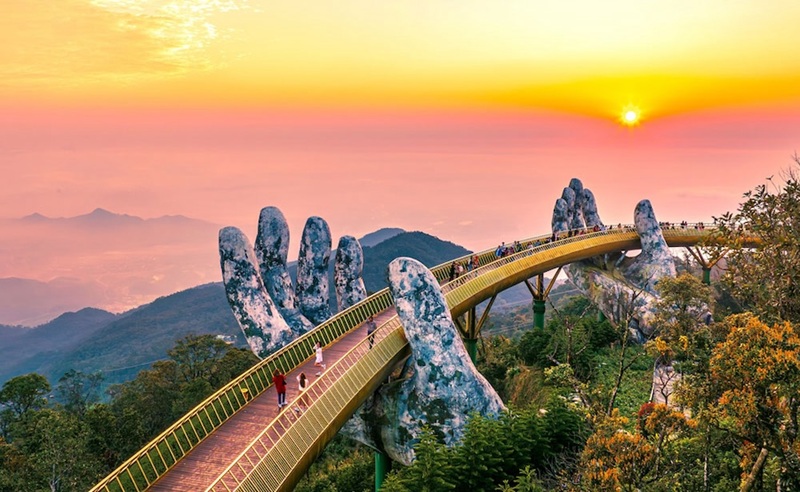
In the rainy season (September to March), fog is more frequent and can obscure the panoramic views, so be prepared for a cooler and more mystical experience.
4.2. Marble Mountains & Son Tra Peninsula – ideal visiting months
The Marble Mountains and Son Tra Peninsula are best explored in dry, mild weather to ensure a comfortable and safe visit. The ideal months are from February to May and September to October. During these months, the weather is pleasant enough for hiking, climbing the stone stairs, and exploring the caves and pagodas of the Marble Mountains.
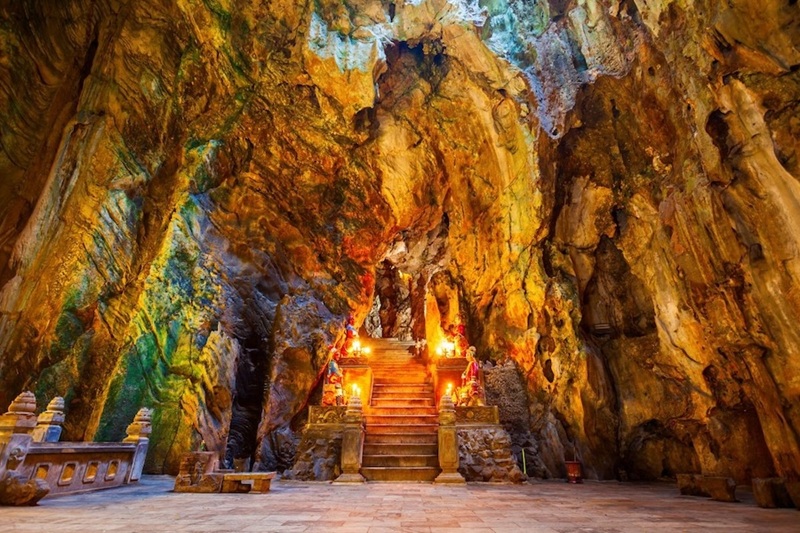
Similarly, this is the perfect time to ride a motorbike up to the scenic viewpoints on the Son Tra Peninsula, such as the Linh Ung Pagoda, as the roads will be dry and the visibility is excellent. It is best to avoid the hottest months of summer (June-August) when the humidity and heat can make climbing physically demanding.
4.3. Han River & Dragon Bridge – nighttime weather charm
The Han River and the Dragon Bridge are stunning at night, and their appeal is largely independent of the weather. The best time to experience them is on a clear evening, especially on weekends when the Dragon Bridge's fire and water show takes place.
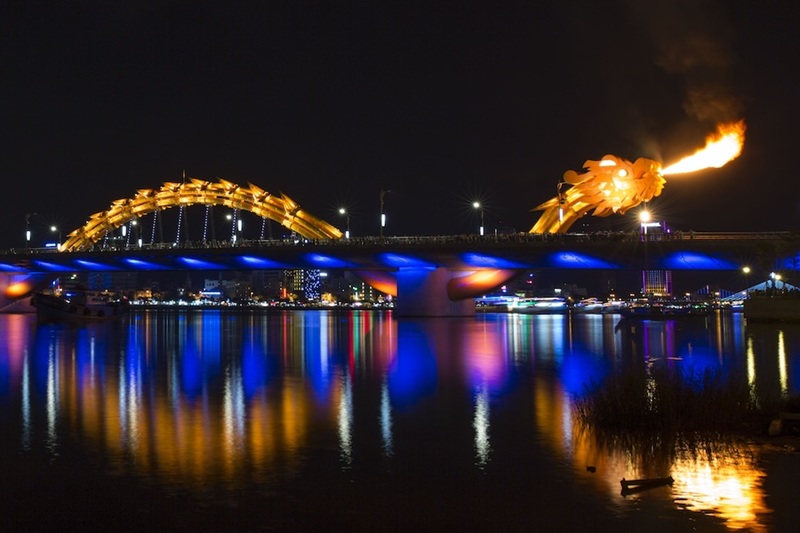
The weather from January to July is typically dry, providing the perfect conditions for a leisurely stroll along the riverbank or a relaxing boat cruise. Even during the rainy season, a light drizzle can add a romantic and charming touch to the city lights reflecting on the water. If you want to see the fire and water show, aim for a weekend evening around 9 p.m., but be prepared for crowds regardless of the weather.
5. Seasonal Travel Tips for Da Nang
Da Nang’s distinct dry and wet seasons require different approaches to packing and planning. Preparing for the specific weather patterns will ensure your trip remains enjoyable, no matter the forecast.
5.1. Packing essentials for hot vs rainy months

In hot months, you should pack:
- Light, breathable fabrics (cotton/linen)
- High SPF Sunscreen & Hats
- Swimwear & Beach Gear
- Insect Repellent: Useful for evening strolls or visits to mountainous areas like Son Tra.
On the other hand, things you should pack in rainy months especially in October and November:
- Light raincoat or umbrella
- Waterproof/Quick-drying shoes, avoid leather items
- Long-sleeve shirt or light jacket: The air can feel quite cool, particularly in the evenings (January to early March).
5.2. How to handle sudden storms & typhoons
While direct typhoons are relatively rare, Da Nang can experience heavy storms and prolonged rain, especially from September to November. It’s important to stay informed and flexible:
- Check local weather apps and news channels daily, specifically for information regarding tropical depressions or storms.
- If a major storm is forecast, your flight or boat trip (especially to the Cham Islands) may be delayed or cancelled. Do not attempt outdoor activities like hiking or swimming when severe weather warnings are in place.
- Have a backup list of indoor activities. Da Nang boasts excellent museums (like the Cham Museum), huge shopping centers (like Vincom), and numerous cooking class options that are perfect for rainy days.
- Choose hotels or resorts that offer robust indoor amenities (spas, restaurants, kids’ clubs) so you still have plenty to enjoy if you need to shelter indoors for a day or two.
5.3. Recommended festivals and local events by season
Timing your visit to coincide with a major event can add a rich cultural layer to your trip:
- Spring (Jan – Apr): This season is vibrant with traditional festivities. Look out for the Boat Racing Festival (the 1st lunar month), typically held on the Han River, celebrating the start of the fishing season and praying for safe voyages and abundant harvests. The atmosphere is energetic and deeply rooted in local culture.

- Summer (May – Aug): This is the high season, dominated by the spectacular Da Nang International Fireworks Festival (DIFF). This multi-week event draws international teams and lights up the Han River, turning the city into a global entertainment hub. If you visit in summer, securing tickets or a prime viewing spot should be a top priority.
- Autumn/Wet Season (Sep – Dec): While tourist numbers drop, this period is great for foodies. It’s an ideal time for local culinary events and smaller festivals that celebrate the harvest and local produce. Events are less formal and offer a more intimate look at local life.
6. FAQ about Da Nang Weather
6.1. Which seasons should I consider avoiding in Da Nang?
While Da Nang is accessible all year, travelers prioritizing smooth, budget-friendly trips should be cautious of two specific periods:
1. Peak Monsoon Season (September to November)
This is the city's wettest time, characterized by frequent, heavy, and prolonged downpours. The relentless rain severely restricts tourism: it makes outdoor activities like beach swimming, sunbathing, and mountain hiking impossible, and complicates travel between attractions due to slippery roads and potential flooding. If your ideal trip involves outdoor adventures and clear skies, it is highly advisable to book outside this three-month window.
2. Vietnamese Lunar New Year (Tết) Holiday
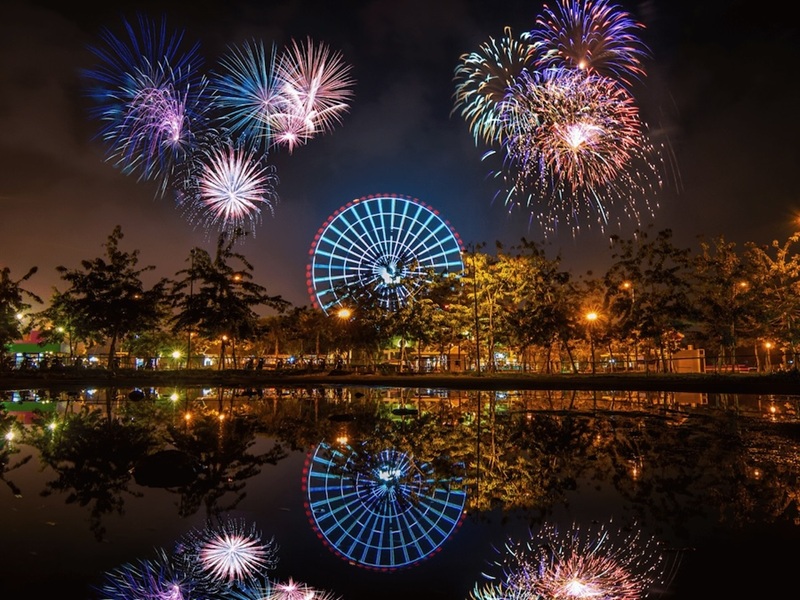
Traveling during Tết (typically late January/early February) offers a rich cultural experience but carries significant drawbacks. You will face extreme overcrowding at popular sites, leading to long queues and wasted time. More importantly, this period involves sharp price inflation—expect dramatically higher costs for flights, hotels, entrance tickets, and even restaurant dining due to holiday surcharges and peak demand. Traveling during Tết requires a flexible schedule and a substantially larger budget.
6.2. What is the ideal duration for a trip to Da Nang?
The perfect length for a Da Nang vacation depends entirely on your pace and how many side trips you plan to take. However, a stay of 3 to 5 days is generally recommended as the optimal timeframe. This duration allows you enough time to explore the city's main sights, relax on the renowned beaches, and include one or two essential day trips without feeling rushed.
6.3. What is an ideal one-day itinerary for exploring both Da Nang and Hoi An?
While challenging, it is possible to experience the highlights of both Da Nang and Hoi An in a single, well-planned day. Focus on key, nearby locations to maximize your time:
Morning (Da Nang Focus):
- Marble Mountains: Prioritize an early visit to climb the stone steps, explore the caves and pagodas, and take in the panoramic views of the coast.
- Alternatively, visit Linh Ung Pagoda on Son Tra Peninsula to see the towering Lady Buddha statue and enjoy sweeping city views before the day heats up.
Afternoon & Evening (Hoi An Focus):
- Hoi An Ancient Town (Afternoon): Spend the late afternoon and evening strolling through the UNESCO-listed Old Town. Focus on iconic landmarks like the Japanese Covered Bridge, the historic merchant houses, and the colourful assembly halls.

- For a grand finale, consider visiting Hoi An Memories Land - a complex of tourism, resorts, and culture located adjacent to and an inseparable part of Hoi An’s ancient town. The destination offers a variety of mini-shows and traditional folk games, culminating in the critically acclaimed "Hoi An Memories Show" (Ký Ức Hội An), a spectacular real-life performance that runs from 8:00 PM to 9:00 PM nightly (except Tuesdays).
There's no single "best" time; only the time that maximizes your travel experience and investment. Whether you seek the guaranteed sun of summer or the mild, less-crowded shoulder season, Da Nang offers distinct rewards. By understanding the climate and planning smartly, Hoi An Memories Land wishes you an exceptional journey to this dynamic coastal hub.
-
Hotline: 1900 63 66 00
-
Press 1 For tickets
-
Press 2 For Customer Service
Latest news

Dry Season in Hoi An: What to Expect & How to Make the Most of It

Hoi An’s Weather Guide by Month: Best Times & Seasonal Travel Tips

Best Hoi An Wedding Photoshoot Locations in 2025 and Tips for a Perfect Album

Travel Guide and Itinerary for Visiting Hoi An from September to December














Comment